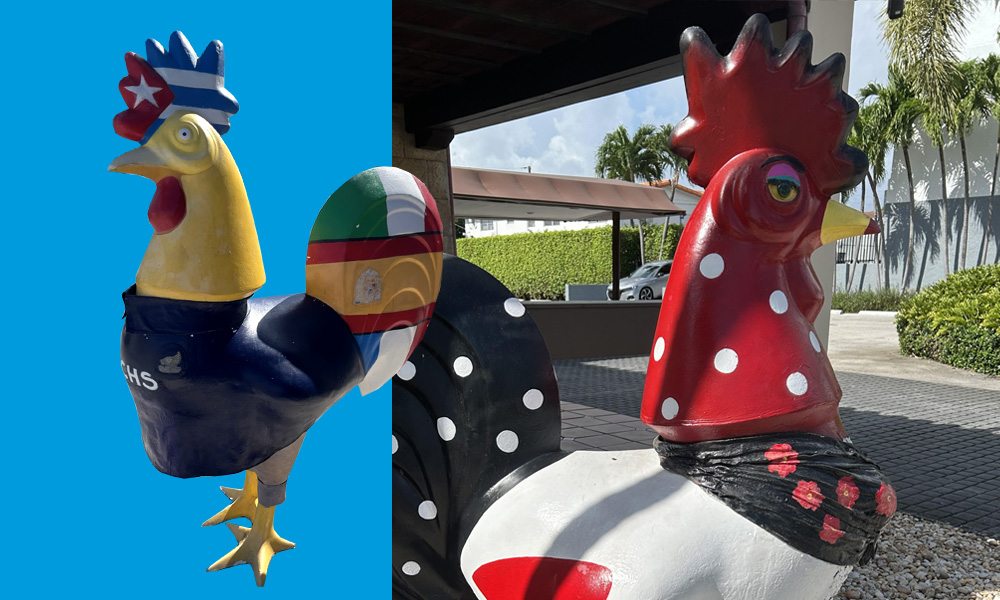By: Blanca R. Gómez Bachelor in Art History
Have you ever seen the sculptural figures of the imposing roosters that adorn Calle 8 (8th street) in Little Havana? They say this story arose from the inspiration of the painter Pedro Damián (1952-2016), from Cienfuegos, who arrived in Miami during the Mariel exodus in 1980.
This idea occurred to the artist when observing the elegant flamingos that adorn the streets of Coral Gables, according to statements by Pablo Cantón, emeritus director for the businesses on Calle 8. The mural project began in 2000. The famous sculptor Cuban Tony López was commissioned to design and create the figures, and Pedro Damián was in charge of the artistic part.
When I saw these figures, I was curious: what inspired the artist to choose the rooster figure to place in this emblematic street? At first glance, the answer is more straightforward than it seems. Since the end of the 19th century, the rooster was a recurring figure in Cuban art. Many painters felt inspired by the beautiful bird’s elegance, gallantry, and masculinity.
One of the most famous examples is the paintings of one of the greats of the Cuban avant-garde, Mariano Rodríguez, who turned the rooster image into a national icon during the first half of the 20th century, a symbol of Cubanness.
The idea of the artist Pedro Damián to place roosters in Little Havana, the epicenter of the Cuban exile since 1960, was not only correct: I would dare to say that it was also a brilliant idea. And as every Cuban story could not lack a humorous touch, they say that when they placed the first roosters, the criminals began to break them because they believed that there were surveillance cameras hidden in them. Funny, right?
The fact is that the eyes of the roosters are disturbing, as if they were staring at passers-by, leading us to another reflection. Could the artist intend to convey that feeling of being watched on the island? Or is it a coincidence?
We will no longer be able to know with certainty since he died in a traffic accident in 2016. We will be left with that unknown then. We will continue to wonder if they are only a colorful and folkloric memory of the longed-for homeland or if, in reality, they are something more.

